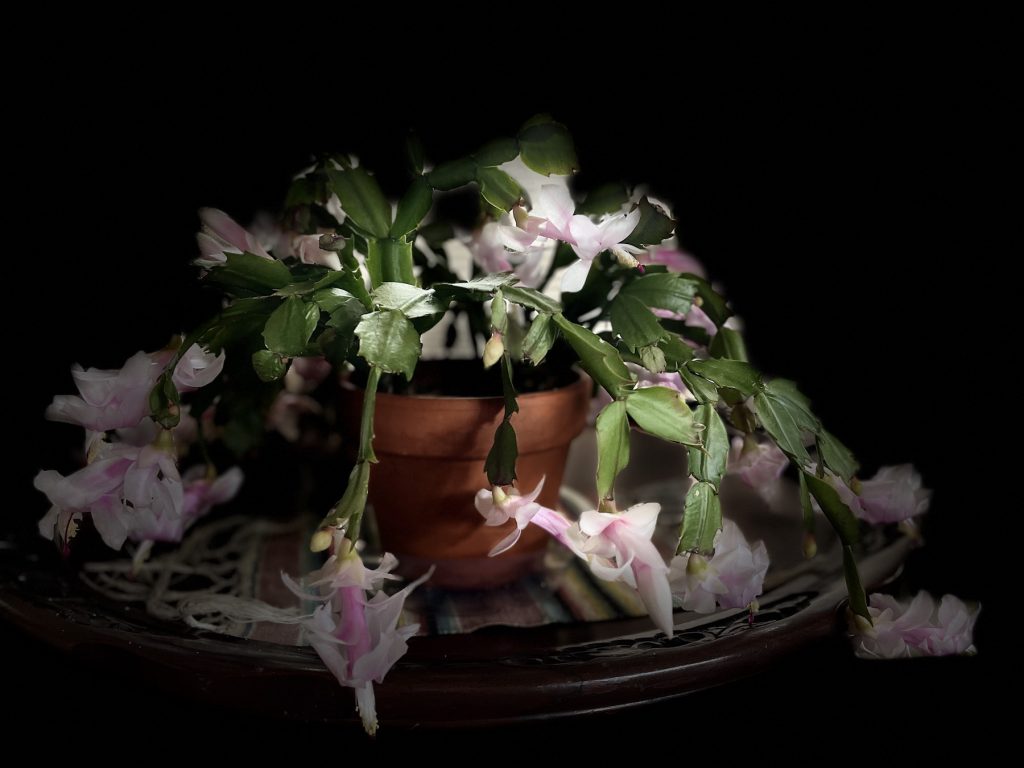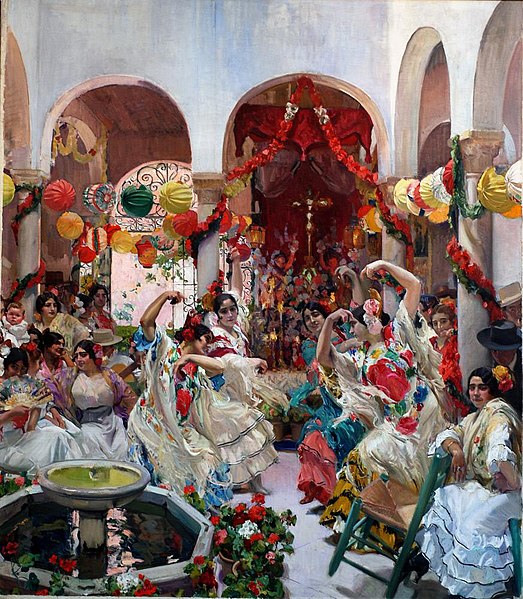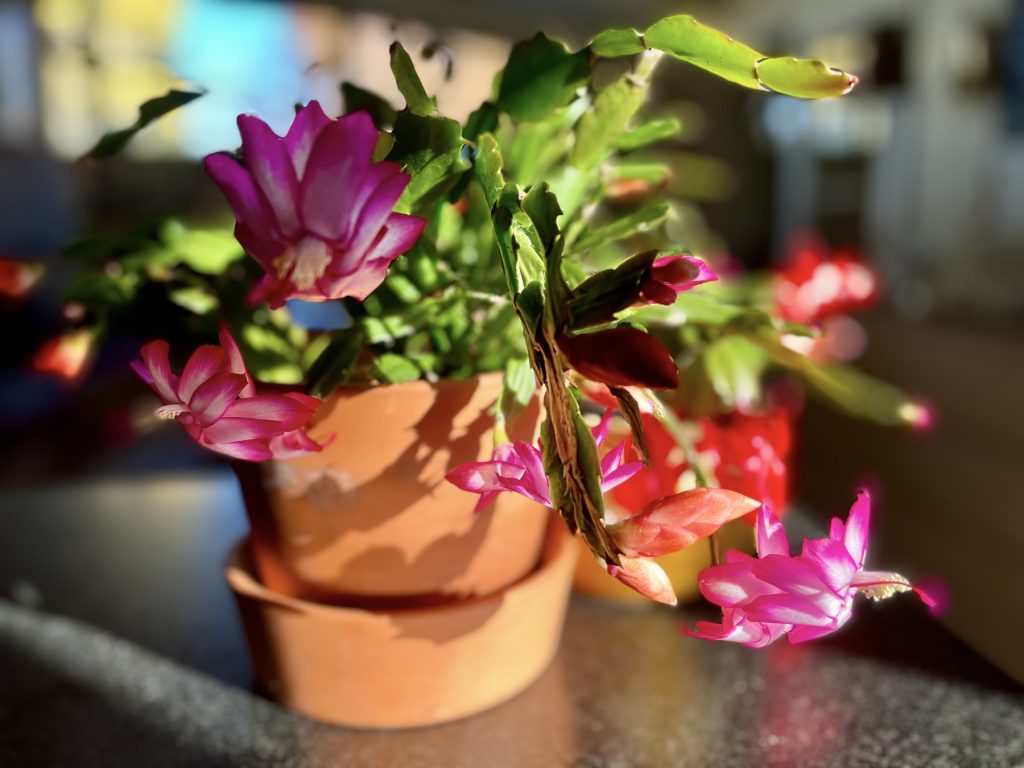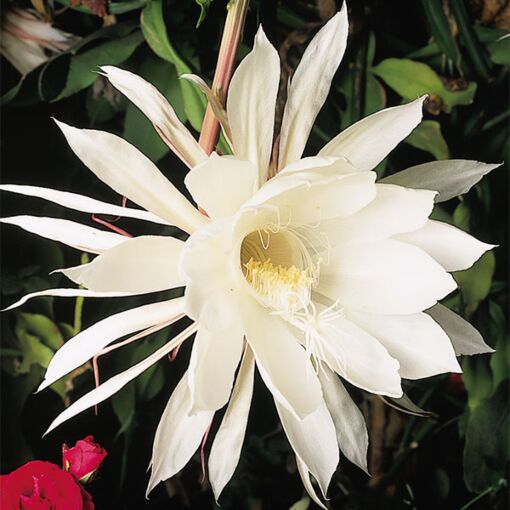The steppe-like conditions in my garden – with no rain for the past few months but what seems like an eternity – puts trees and much else in the garden at risk from what will probably be a brute of a winter, if one believes the old adage that many berries signal a lean, mean winter.

Meanwhile, things are looking up indoors. The holiday season is upon us, with gazillions of gaudy poinsettias greeting us at the entrance to every Costco across the land. Yet, for us diehards who’d prefer to keep the show going year on year, rather than discard the seasonal houseplant with the Yule log and mistletoe, the vivid flower colors of the Schlumbergera family is just what we need.
Schlumbergera is a small genus of tropical epiphytes, of which the most widely grown are the Thanksgiving cactus, S. truncata, and the Christmas cactus, S. bridgesii, distinguished from each other by their leaf shape: the leaves of the first are more deeply dentate than those of the second. I have several of each and right now they are all in flower, so clearly not fussy about sticking to their designated holiday.

The flowers are a delight, and to my eye look like a troupe of flamenco dancers flashing their skirts in an explosion of frills and finery. If that’s too much alliteration, I don’t apologize – these houseplants are worthy of overindulgence: One is not enough, nor is a dozen.
The shortening days and weakening light at the end of the year are needed for these cactus to flower. Epiphytic plants, they grow in filtered sun, on trees and rocky outcrops in their native zone of southeastern Brazil’s coastal mountains. They do best in free-draining soil; I use a blend of gritty cactus mix and Fertilome potting soil in terracotta pots for best results. Do not overwater! If soil is too wet, it leads to a condition known as “sudden collapse”, when the foliage becomes limp and shrivels (so do I given adverse conditions). However, this can be remedied by letting the plant dry out, before gradually resuming light watering. During the summer, move the plants outdoors. Keep in mind their native growing conditions and position the pots in dappled shade beneath trees or shrubs; I put mine among the geraniums and their foliage make a pretty green matrix beneath the brightly flowered pot plants.

As summer winds down and days shorten, buds begin to form along the leaf tips. Growth stops, and flowering takes over. Move the plants indoors, place in somewhere sunny, but avoid direct sun. Mine are in a west-facing window glazed with semi-opaque glass. Happy as clams and flowering gloriously. Buds are developing, so the show will carry on for a few weeks yet. Afterwards, tidy up the plants by pruning back to a leaf joint…the clippings root easily too, if put into compost around the edge of terracotta pot, burying the leaf by half. They make wonderful pass-along plants.

Schlumbergera gaertneri (syn. Hatiora gaertneri) produces the Easter cactus, a variation on a theme. Not a seasonally appropriate but related cactus is Epiphyllum oxypetalum, the night-blooming cactus notorious for its large, richly perfumed flowers. The size of a dinner plate, the flowers only last one night to attract night-feeding moths for pollination. The event was a cause for party-making in a well-stocked conservatory, the better to revel in the sensual indolent perfume with friends. And then there is the dragon fruit or pitaya, in the genus Selenicereus, grown as a crop in tropical and subtropical climates. Cultivation for fruit production is not for the faint hearted. To be productive the plants must be groomed and trained to considerable size, and a degree in engineering is recommended to construct adequate support. Just kidding, of course, but there’s a couple of videos on YouTube that illustrate just what I am hinting at…I think I’ll stick to flamenco dancers and sugar plums.

©Ethne Clarke, 2021
To shop for these plants (and many more conservatory-worthy treasures), visit Logee’s online nursery — they even retail dragon fruit — at https://www.logees.com
Joaquin Sorolla y Bastida’s epic mural “Vision of Spain” is on permanent display at the Hispanic Society of America Museum and Library, 613 West 155th Street, New York, NY. http://hispanicsociety.org


